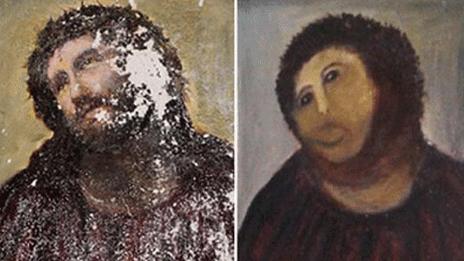The Adoration of the Shepherds: Fitzwilliam Museum 10-year restoration
- Published
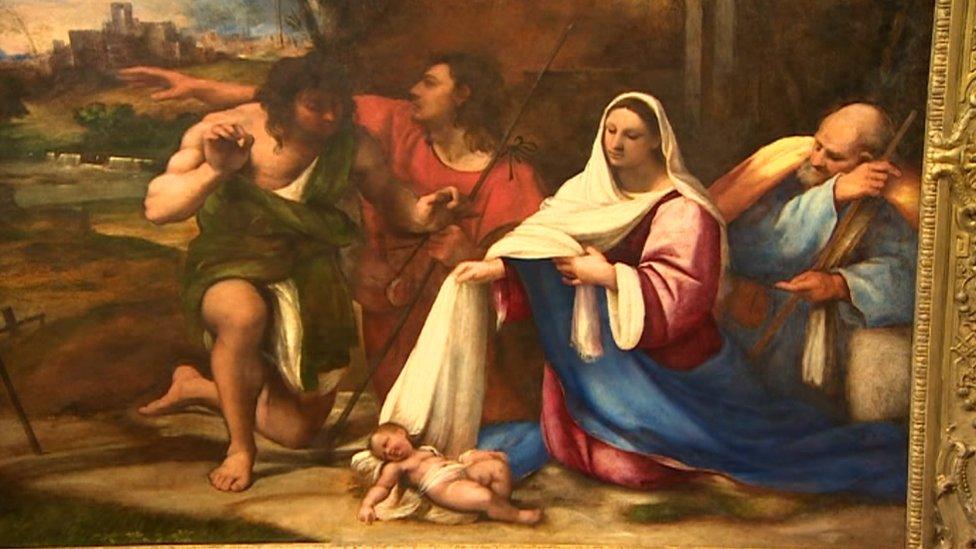
A Renaissance masterpiece has been returned to a complete painting for the first time in centuries following a 10-year restoration.
The Adoration of the Shepherds by 16th Century Italian artist Sebastiano del Piombo was removed from a wooden panel with acid in the 1700s and then painted over.
Conservators at Cambridge's Fitzwilliam Museum worked to repair the damage.
It is due to be displayed at the museum for the first time later this year.
The Adoration of the Shepherds, dated at between 1511 and 1512, was almost completely destroyed while owned by the French royal family.
Fitzwilliam Museum: 10-year repair of Renaissance masterpiece complete
It was removed from the wooden panel so it could be placed on canvas and then painted over several times.
The Hamilton Kerr Institute, art conservators based at the Fitzwilliam Museum, has held the painting since the 1980s.
"It was only in the past five or six years that we've worked steadily on it; unravelling the whole history, uncovering the original from layers and layers of later repaint and trying to reconstruct the missing areas," said Rupert Featherstone, the institute's director.

A masterpiece for a wealthy client
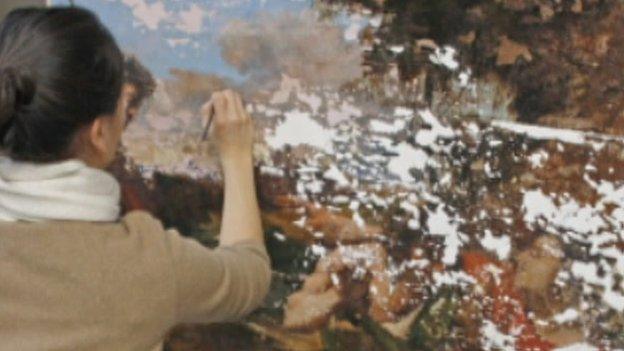
Sebastiano del Piombo (1485-1547) was a friend of Titian and came to know Michelangelo
The Adoration of the Shepherds "combines the Venetian light and sense of colour with Roman form, gained from Michelangelo," Mr Featherstone said
It was part of the French royal collection when it was damaged
It was bought by Lord Fitzwilliam in 1816
Study of the original layers of paint revealed the artist used expensive pigments - even for colours not seen by the naked eye - and was undoubtedly working for a wealthy client

"It's been one of the biggest things we've ever done.
"It was a picture that had, superficially, the image of the underlying masterpiece but was totally non-unoriginal on its surface."
A copy held by the Louvre in Paris was used as a guide and fragments of original paint smaller than a pinhead were studied under a microscope.
"We were delving down to discover if we could uncover the original and, knowing there was damage, whether we could reconstruct those so we could hang the painting as a painting, rather than as an archaeological fragment."
The completion of the restoration coincides with the 200th anniversary of the museum, founded by Lord Fitzwilliam in 1816 - the same year he bought The Adoration of the Shepherds.
"We need to tell people the whole story, some people will think we should have left it alone," added Mr Featherstone.
"It will be very interesting to see what the public think."
- Published2 January 2016
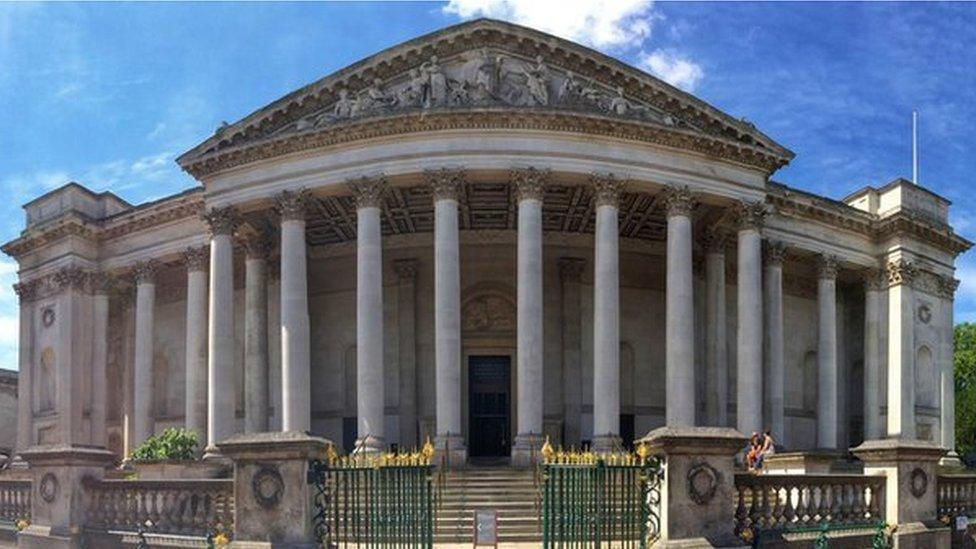
- Published25 November 2015
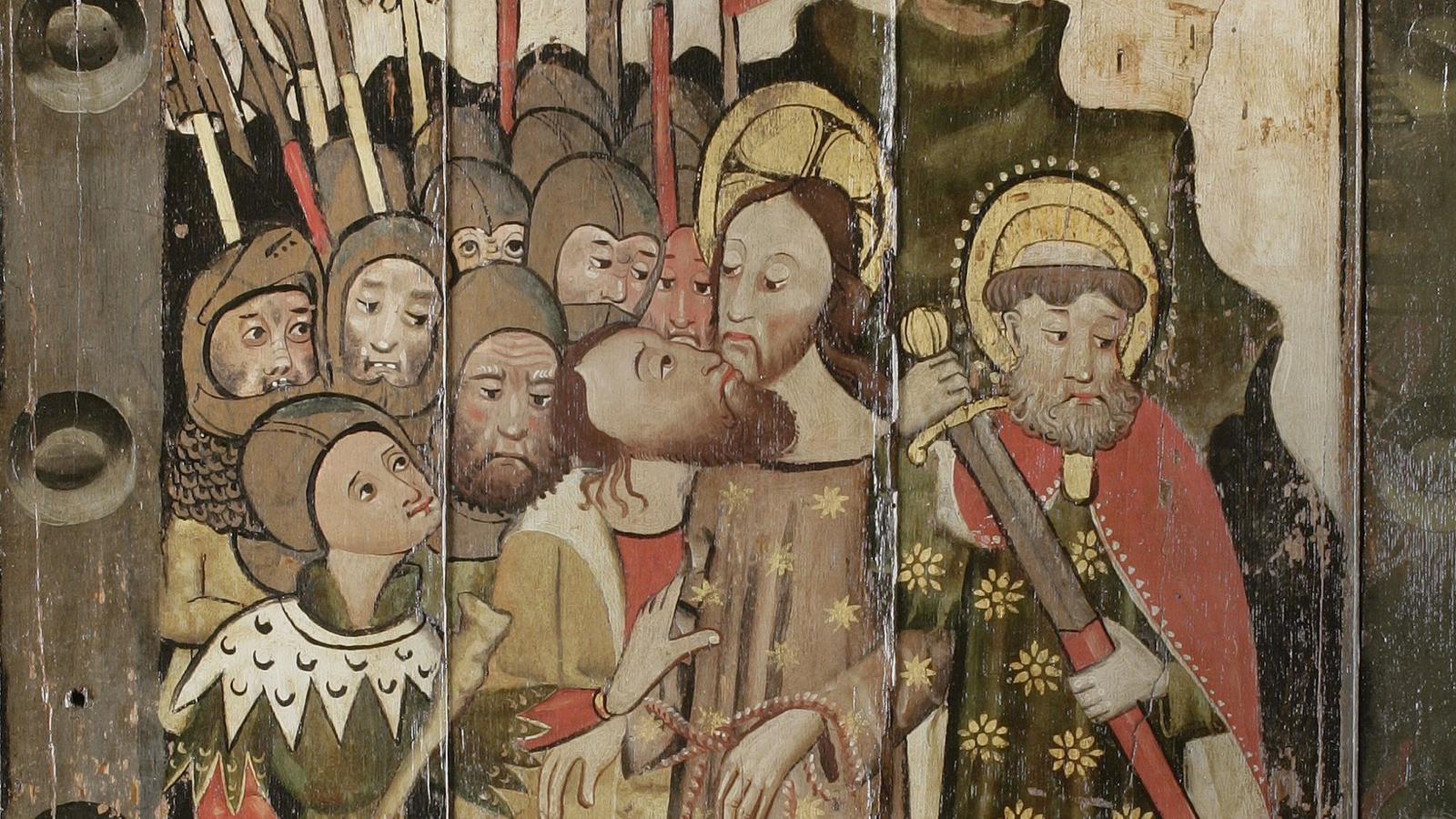
- Published18 March 2015
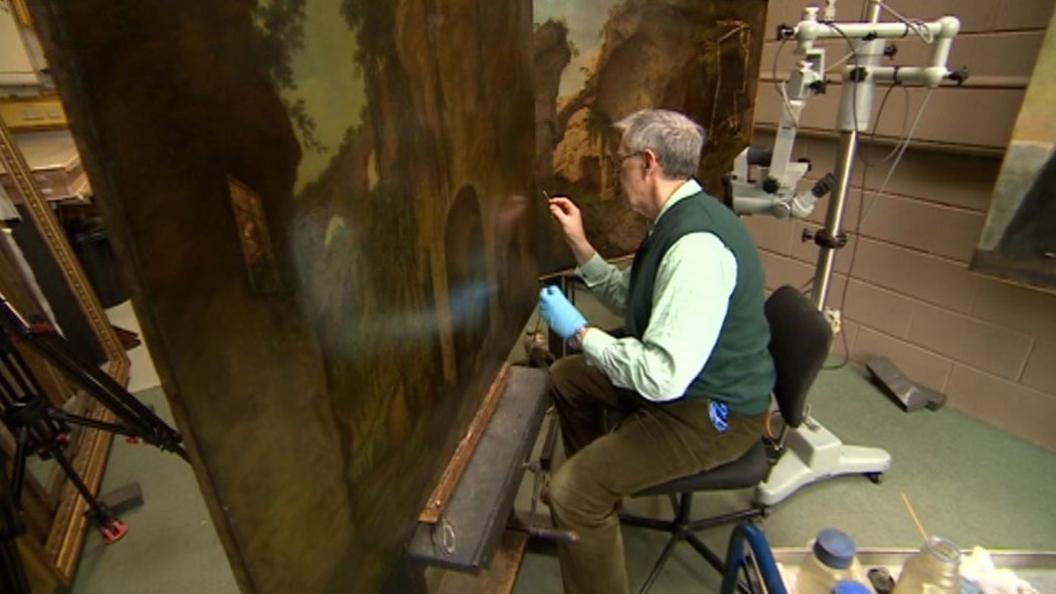
- Published13 May 2014

- Published23 August 2012
